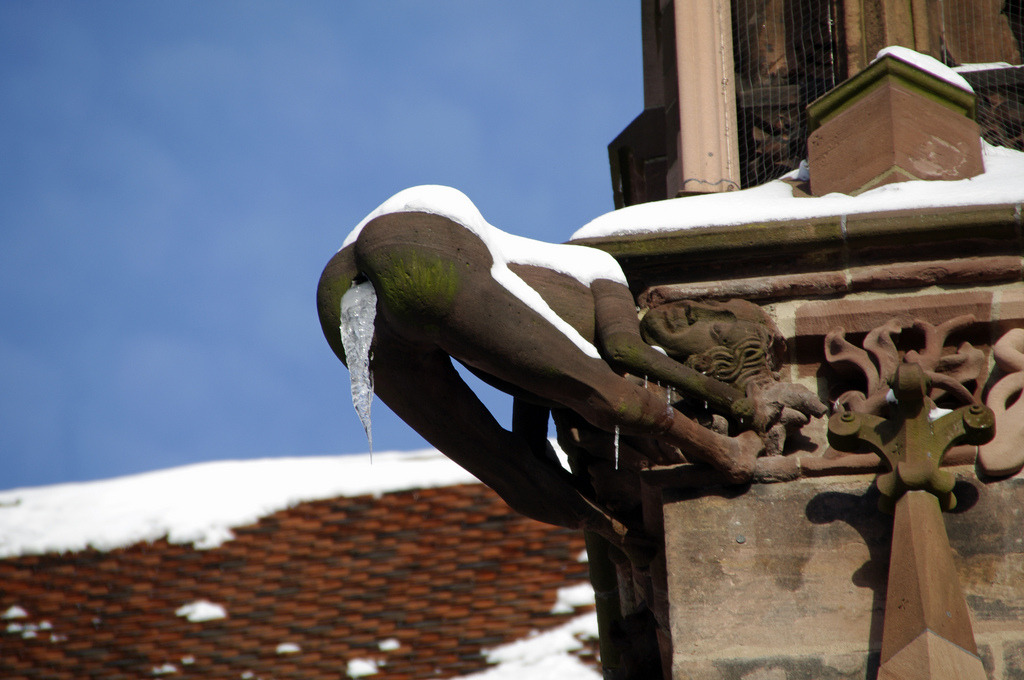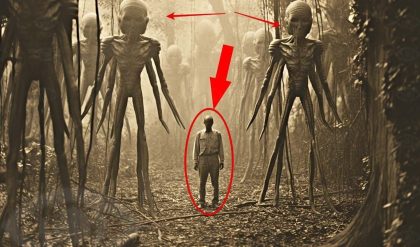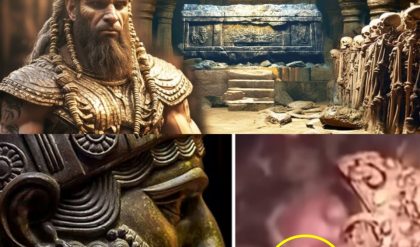In the heart of Freiburg, Germany, stands the majestic Freiburg Minster, a cathedral renowned for its stunning Gothic architecture and intricate stonework. Among its many decorative gargoyles, one in particular has captured the imagination of visitors and historians alike: the infamous “mooning gargoyle.” This cheeky figure, forever frozen in the act of baring its backside, is not just a whimsical addition to the cathedral’s exterior—it is said to be a stonemason’s lasting symbol of revenge against the city council.

The Origins of the Mooning Gargoyle
**1. Freiburg Minster Construction:
The Freiburg Minster was constructed over several centuries, starting in the early 13th century and continuing into the 16th century. Like many Gothic cathedrals of its time, it features an array of gargoyles designed to serve both functional and decorative purposes. These stone creatures, often grotesque or humorous, were originally intended as water spouts to divert rainwater away from the building’s walls.
**2. The Legend of the Mooning Gargoyle:
According to local legend, the mooning gargoyle was the result of a bitter dispute between the stonemason responsible for the cathedral’s construction and the city council of Freiburg. The story goes that the council refused to pay the stonemason the full amount he was owed for his work on the Minster. Outraged by this unfair treatment, the stonemason devised a clever form of revenge.
**3. A Symbol of Defiance:
In a subtle yet powerful act of defiance, the stonemason sculpted a gargoyle that appears to be mooning the city—a deliberate insult directed at the council members who had wronged him. The gargoyle’s position on the Minster, with its backside prominently displayed towards the town, ensured that the council would be reminded of the stonemason’s displeasure for generations to come.

The Cultural Significance
**1. Artistic Expression of Protest:
The mooning gargoyle is more than just a humorous addition to the cathedral’s architecture; it represents a unique form of artistic protest. In an era when direct confrontation with authority could have severe consequences, the stonemason’s act of embedding his displeasure in the stonework of the Minster was both bold and ingenious.
**2. Legacy of the Stonemason:
This tale has immortalized the anonymous stonemason in local folklore. Although his name may be lost to history, his defiant spirit lives on through the gargoyle, which continues to amuse and intrigue those who visit Freiburg Minster.
**3. Gothic Architecture and Humor:
Gothic architecture, while often associated with solemn religious imagery, also frequently incorporated elements of humor and satire. The mooning gargoyle is a prime example of how medieval artisans used their work to comment on society, blending craftsmanship with wit in a way that resonates even today.
Modern Interpretations
**1. Tourist Attraction:
Today, the mooning gargoyle is a popular attraction for visitors to Freiburg Minster. Tourists are often intrigued by its backstory, which adds a layer of human drama to the grandiosity of the cathedral. Guides and locals alike enjoy recounting the tale, highlighting the gargoyle as a symbol of the underdog standing up to authority.
**2. Symbol of Artistic Freedom:
In modern times, the mooning gargoyle has come to symbolize the enduring power of artistic freedom and expression. It serves as a reminder that art can be a powerful tool for voicing dissent, even in the face of injustice.

Conclusion
The tale of the mooning gargoyle at Freiburg Minster is a fascinating blend of history, legend, and humor. This quirky piece of stonework is not just a relic of the past, but a lasting testament to the creativity and resilience of an artist who used his craft to make a bold statement. As visitors continue to flock to Freiburg Minster to catch a glimpse of the infamous gargoyle, the story of the stonemason’s revenge remains an enduring part of the city’s rich cultural heritage.





